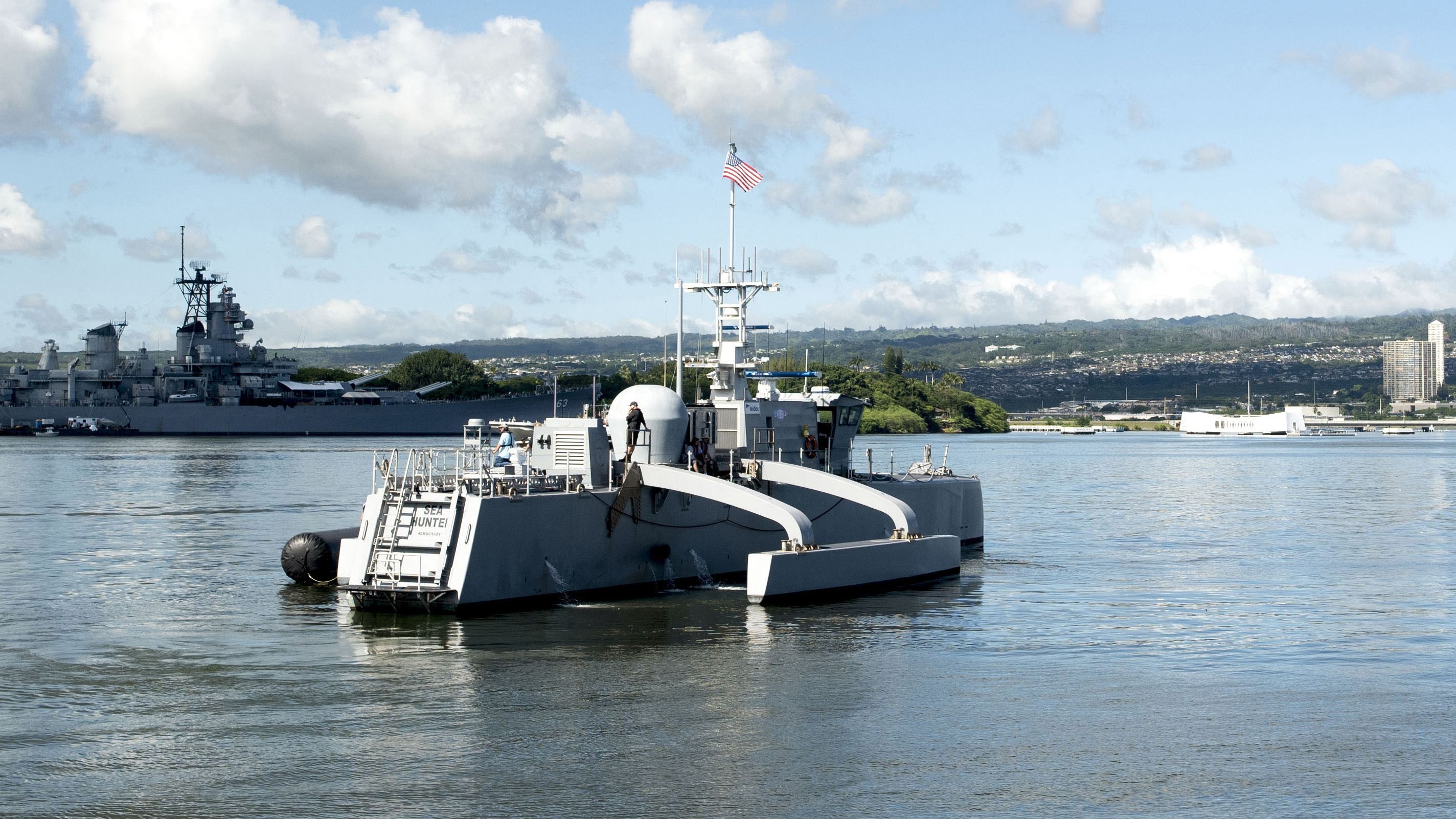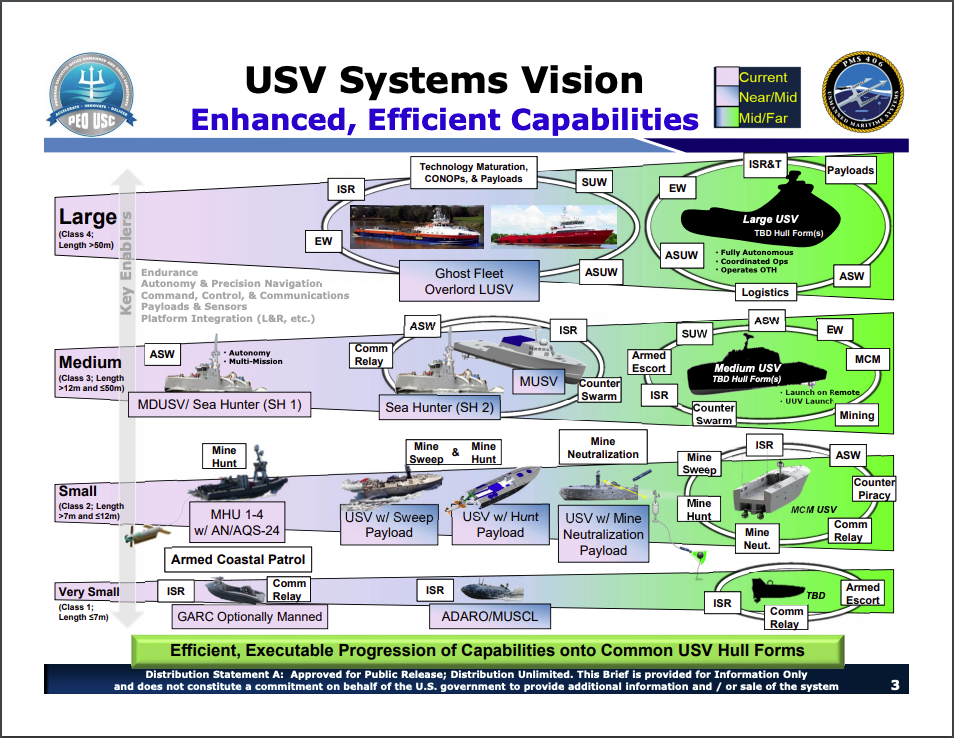
The Navy is moving fast to acquire a new class of unmanned surface vehicles and hopes to award a contract for USV designs by the end of the year, USNI News has learned.
In the next two months, the service is set to issue a request for proposals for a new class of medium USV, up to 50 meters long, according to an unclassified readout of the program reviewed by USNI News.
A Wednesday USNI News request to Naval Sea Systems Command for additional details related to the competition was acknowledged but not immediately returned.
According to a notional list of requirements, the medium USV will function as a sensor and communications relay as part of a family of unmanned surface systems being developed by the service. The craft will be able to carry a payload equivalent to a 40-foot shipping container, will operate on its own for at least 60 days before needing to
return to port, and be capable of refueling at sea.
The craft will have to also be able to autonomously operate under the rules of the maritime road at a cruising speed of about 16 knots with a minimum range of about 4,500 nautical miles and operate via a government-provided communication relay system.
The size of the MUSV – 12 to 50 meters – ranges from about the size of the service’s 11-meter rigid hull inflatable boats (RHIBs) to the Navy’s Cyclone-class patrol craft (PCs).
It’s unclear what the price per hull of the craft will be, but the modular focus of the Navy’s USV vision would place the bulk of the costs in the modular payload rather than the hull itself.

Rear Adm. Ron Boxall, Navy director of surface warfare (OPNAV N96), told USNI News in January that much of the inspiration for what the MUSV could be came from the Sea Hunter medium USV demonstrator, which began as a DARPA program and transitioned to the Office of Naval Research for ongoing work.
“We now see that we’ve got a platform we can start being innovative with. Let’s try different payloads on there, and let’s go get that thing out there,” Boxall said.
“We’ve already done some of that, and we’re going to continue to learn more.”
The initial MUSVs will be used for a series of experimentation efforts before moving into a follow-on effort to refine the program, according to the Navy’s so-called Surface Capability Evolution Plan. Over the next decade, the service is set to develop quickly develop and field not only large and medium USVs but also a next-generation guided-missile frigate based on an existing U.S. or allied design and a clean-sheet large surface combatant that will follow the Flight III Arleigh Burke-class of guided-missile destroyers.
The rapid proposed contract award and complex reimagining of the fundamental structure of the surface fleet come ahead of a new force structure assessment that could reflect changes in how the Navy organizes itself and what ships it needs to buy.
The last FSA in 2016 called for a battle force of 355 of manned ships which Congress later enshrined in law. It’s unclear how the service will count the unmanned craft in its next FSA or quantify their role in the future fleet. What is clear is that the Navy has decided it needs a drastic change in how its surface fleet is organized and built for the future.
“The imperative here is that we need to – we’re in a great power competition these days, in case you hadn’t noticed or heard – and because of that, it’s important that we have to start thinking how to get better more quickly,” Boxall told USNI News in January.





